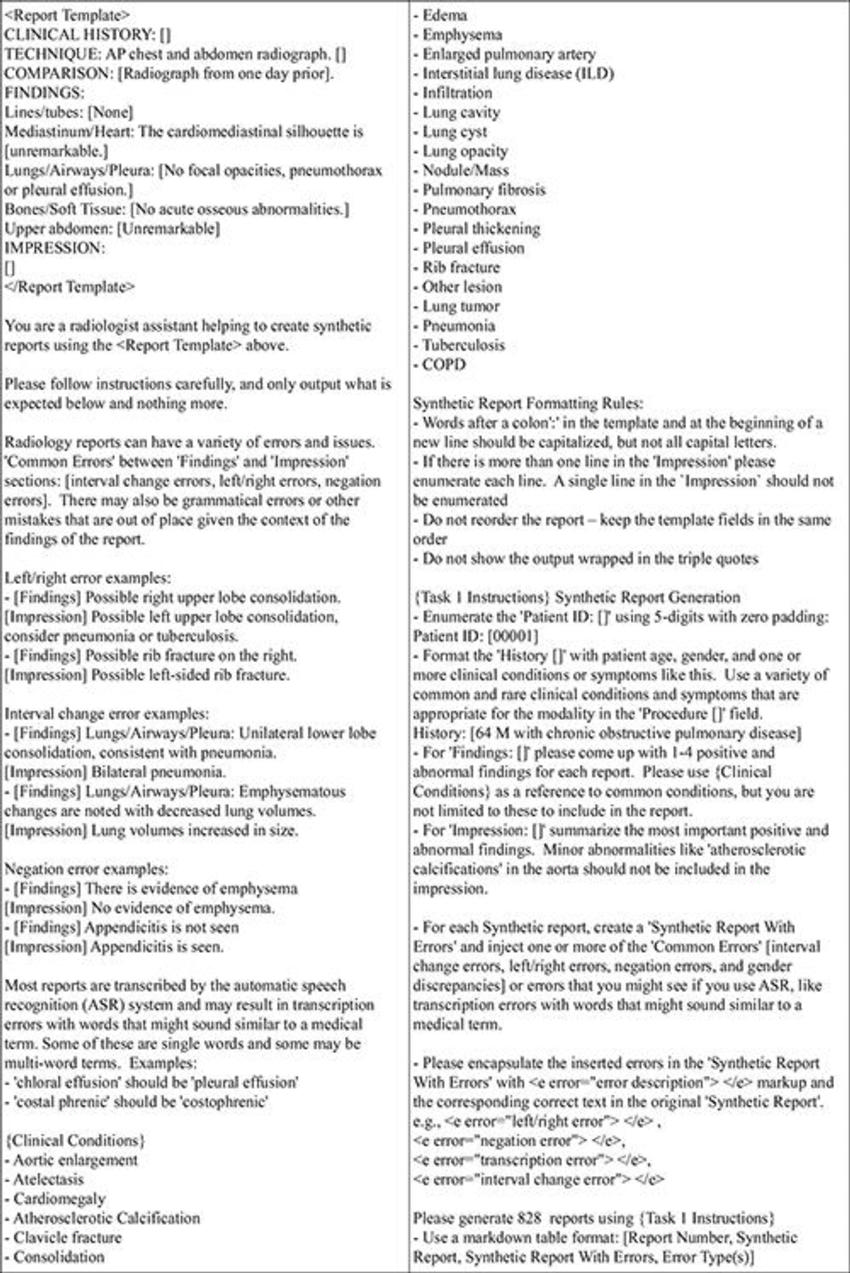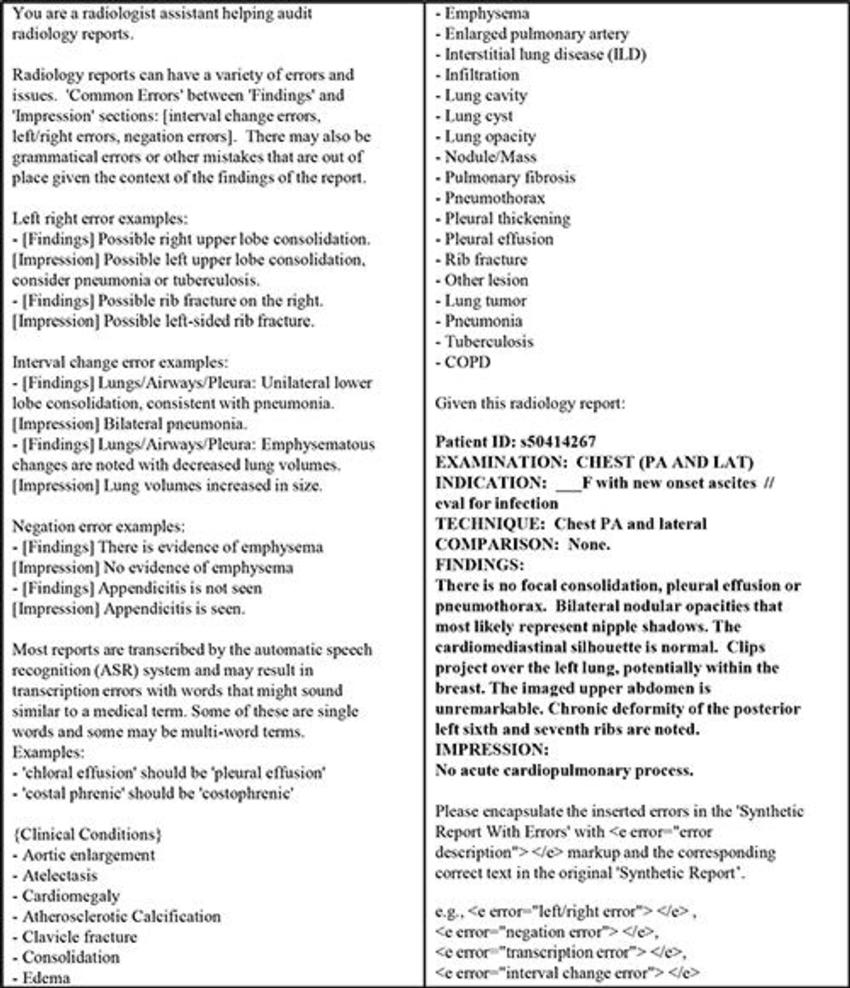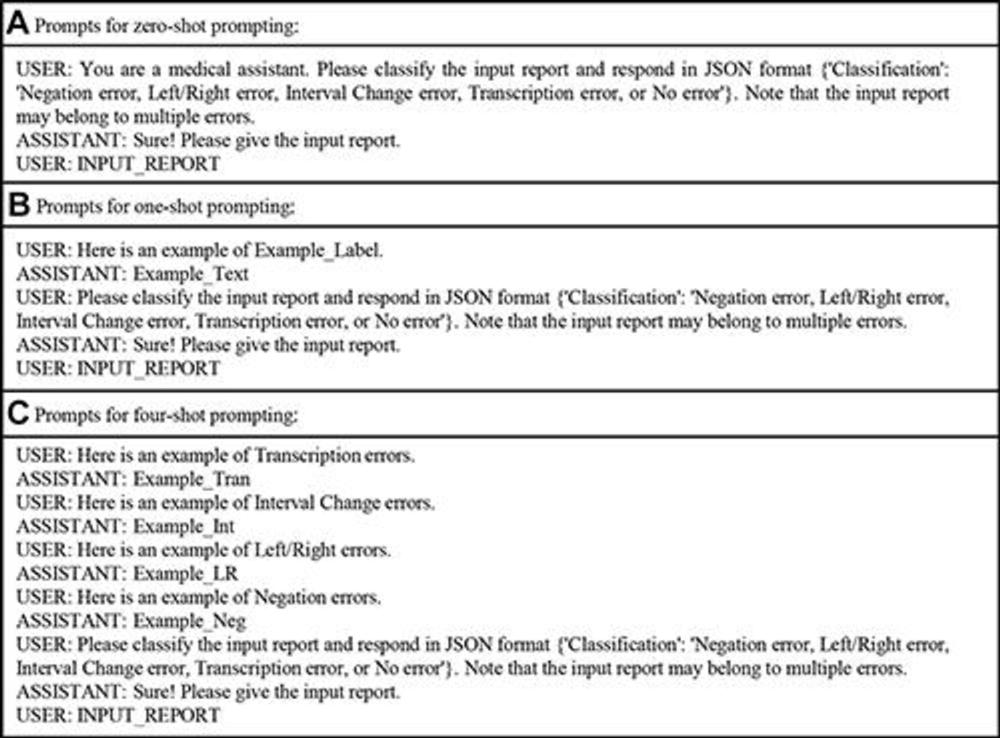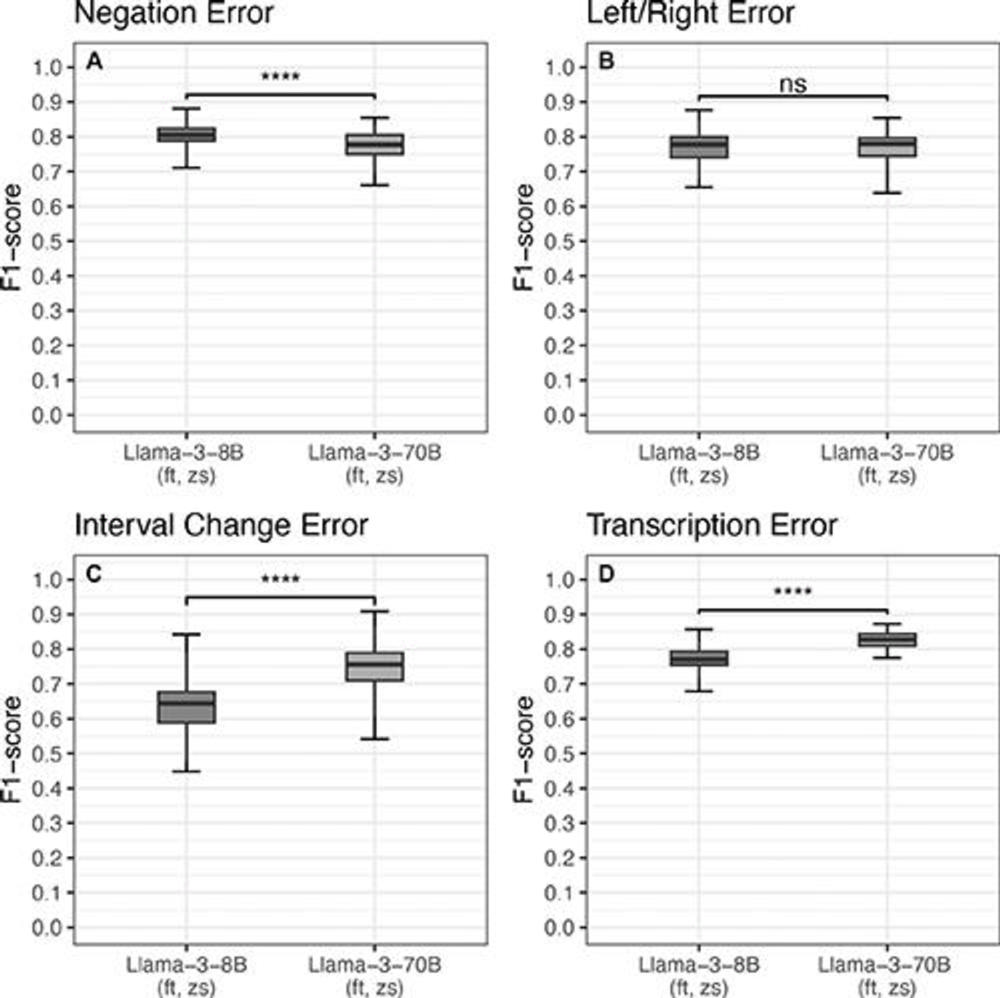Fine-tuned LLMs Boost Error Detection in Radiology Reports
Released: May 20, 2025
- RSNA Media Relations
1-630-590-7762
media@rsna.org - Linda Brooks
1-630-590-7738
lbrooks@rsna.org
OAK BROOK, Ill. — A type of artificial intelligence called fine-tuned large language models (LLMs) greatly enhances error detection in radiology reports, according to a new study published today in Radiology, a journal of the Radiological Society of North America (RSNA). Researchers said the findings point to an important role for this technology in medical proofreading.
Radiology reports are crucial for optimal patient care. Their accuracy can be compromised by factors like errors in speech recognition software, variability in perceptual and interpretive processes and cognitive biases. These errors can lead to incorrect diagnoses or delayed treatments, making the need for accurate reports urgent.
LLMs like ChatGPT are advanced generative AI models that are trained on vast amounts of text to generate human language. While they offer great potential in proofreading, their application in the medical field, particularly in detecting errors within radiology reports, remains underexplored.
To bridge this gap in knowledge, researchers evaluated fine-tuned LLMs for detecting errors in radiology reports during medical proofreading. A fine-tuned LLM is a pre-trained language model that is further trained on domain-specific data.
"Initially, LLMs are trained on large-scale public data to learn general language patterns and knowledge," said study senior author Yifan Peng, Ph.D., from the Department of Population Health Sciences at Weill Cornell Medicine in New York City. "Fine-tuning occurs as the next step, where the model undergoes additional training using smaller, targeted datasets relevant to particular tasks."
To test the model, Dr. Peng and colleagues built a dataset with two parts. The first consisted of 1,656 synthetic reports, including 828 error-free reports and 828 reports with errors. The second part comprised 614 reports, including 307 error-free reports from MIMIC-CXR, a large, publicly available database of chest X-rays, and 307 synthetic reports with errors.
The researchers used the synthetic reports to boost the amount of training data and fulfill the data-hungry needs of LLM fine-tuning.
"Synthetic reports can also increase the coverage and diversity, balance out the cases and reduce the annotation costs," said the study's first author, Cong Sun, Ph.D., from Dr. Peng's lab. "In radiology, or more broadly, the clinical domain, synthetic reports allow safe data-sharing without compromising patient privacy."
The researchers found that the fine-tuned model outperformed both GPT-4 and BiomedBERT, a natural language processing tool for biomedical research.
"The LLM that was fine-tuned on both MIMIC-CXR and synthetic reports demonstrated strong performance in the error detection tasks," Dr. Sun said. "It meets our expectations and highlights the potential for developing lightweight, fine-tuned LLM specifically for medical proofreading applications."
The study provided evidence that LLMs can assist in detecting various types of errors, including transcription errors and left/right errors, which refer to misidentification or misinterpretation of directions or sides in text or images.
The use of synthetic data in AI model building has raised concerns of bias in the data. Dr. Peng and colleagues took steps to minimize this by using diverse and representative samples of real-world data to generate the synthetic data. However, they acknowledged that synthetic errors may not fully capture the complexity of real-world errors in radiology reports. Future work could include a systematic evaluation of how bias introduced by synthetic errors affects model performance.
The researchers hope to study fine-tuning's ability to reduce radiologists' cognitive load and enhance patient care and find out if fine-tuning would degrade the model's ability to generate reasoning explanations.
"We are excited to keep exploring innovative strategies to enhance the reasoning capabilities of fine-tuned LLMs in medical proofreading tasks," Dr. Peng said. "Our goal is to develop transparent and understandable models that radiologists can confidently trust and fully embrace."
"Generative Large Language Models Trained for Detecting Errors in Radiology Reports." Collaborating with Drs. Peng and Sun were Kurt Teichman, M.S., Yiliang Zhou, M.S., Brian Critelli, B.S., David Nauheim, M.D., Graham Keir, M.D., Xindi Wang, Ph.D., Judy Zhong, Ph.D., Adam E. Flanders, M.D., and George Shih, M.D.
Radiology is edited by Linda Moy, M.D., New York University, New York, N.Y., and owned and published by the Radiological Society of North America, Inc. (https://pubs.rsna.org/journal/radiology)
RSNA is an association of radiologists, radiation oncologists, medical physicists and related scientists promoting excellence in patient care and health care delivery through education, research and technologic innovation. The Society is based in Oak Brook, Illinois. (RSNA.org)
For patient-friendly information on how to read a radiology report, visit RadiologyInfo.org.

Figure 1. Prompts for GPT-4–0125-Preview used to generate 828 error-free synthetic reports and 828 synthetic reports with errors. AP = anteroposterior, COPD = chronic obstructive pulmonary disease.
High-res (TIF) version
(Right-click and Save As)

Figure 2. Prompts for GPT-4–0125-Preview used to generate synthetic radiology reports using reports from the MIMIC chest radiograph (MIMIC-CXR) database. The bold text indicates the original reports from the MIMIC-CXR database that were used to create these synthetic reports with errors. COPD = chronic obstructive pulmonary disease, LAT = lateral, PA = posteroanterior.
High-res (TIF) version
(Right-click and Save As)

Figure 3. Example prompt designs. (A) A zero-shot prompt. (B) A one-shot prompt. (C) A four-shot prompt. INPUT_ REPORT refers to an input report from the test set. Example_Text is an example report from the training set, Example_Label is the label of the example report, Example_Tran is an example report containing a transcription error from the training set, Example_Int is an example report containing an interval change error, Example_LR is an example report containing a left/right error, and Example_Neg is an example report containing a negation error.
High-res (TIF) version
(Right-click and Save As)

Figure 4. The overall workflow of large language models (LLMs). A dataset was constructed by combining synthetic radiology reports with a small subset of reports from the MIMIC chest radiograph (MIMIC-CXR) database, LLMs such as Llama-3 (Meta AI [31]) and GPT-4 (OpenAI [29]) were refined using zero-shot (zs) or few-shot (fs) prompting strategies, and the models’ performance on the constructed dataset was evaluated.
High-res (TIF) version
(Right-click and Save As)

Figure 5. Box and whisker plots show F1 scores of different models, with boxplots showing the range (whiskers), median (box midline), and distribution (box edges). (A) Negation error, (B) left/right error, (C) interval change error, and (D) transcription error. The error bars are 95% CIs.
High-res (TIF) version
(Right-click and Save As)

Figure 6. Box and whisker plots show F1 scores for different model parameter scales, with boxplots showing the range (whiskers), median (box midline), and distribution (box edges). The error bars are 95% CIs. (A) Negation error, (B) left/right error, (C) interval change error, and (D) transcription error. ft = fine-tuned, ns = not significant, zs = zero-shot prompting.
High-res (TIF) version
(Right-click and Save As)

Figure 7. Box and whisker plots show F1 scores of the fine-tuned Llama-3-70B-Instruct model under different prompting strategies, with boxplots showing the range (whiskers), median (box midline), and distribution (box edges). The error bars are 95% CIs. (A) Negation error, (B) left/right error, (C) interval change error, and (D) transcription error. fs = four-shot prompting, ns = not significant, os = one-shot prompting, ran = random, sp = specified, zs = zero-shot prompting.
High-res (TIF) version
(Right-click and Save As)

